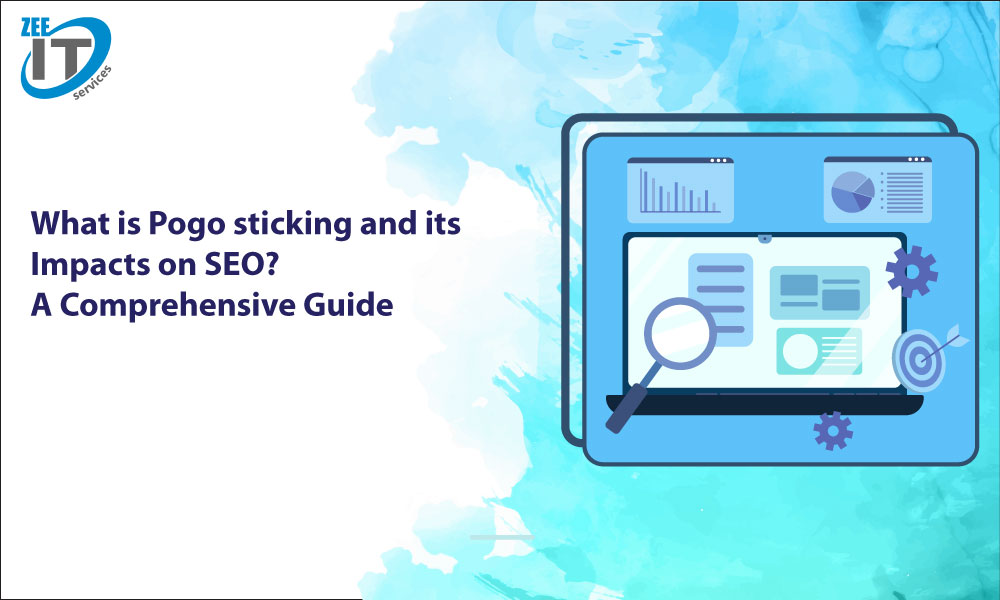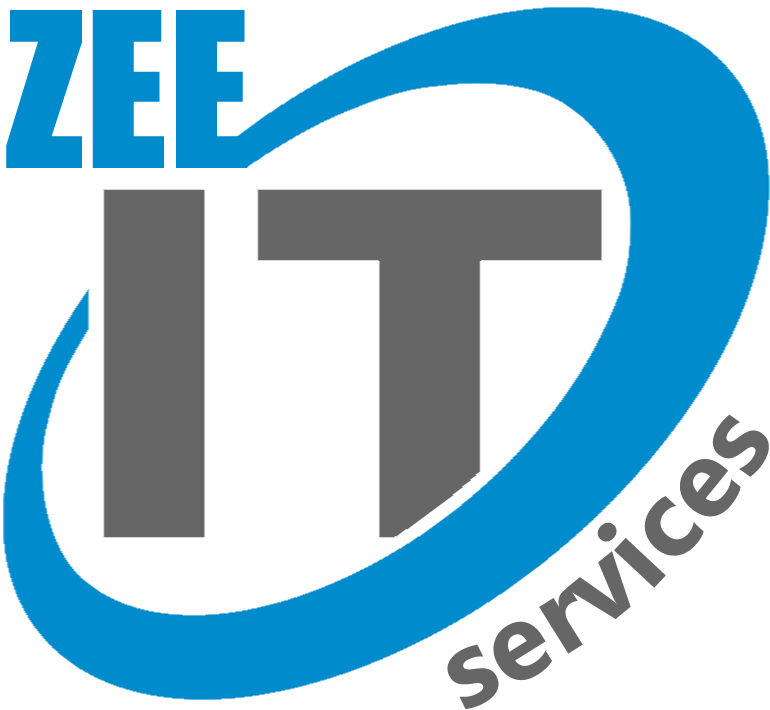
Apr 27, 2023 | Blogs
Before developing any content or launching any marketing campaigns, a digital marketer or content creator must conduct keyword research as a necessary duty. Finding and analyzing the words and phrases people use to seek information about a given subject or business is known as keyword research. You can develop relevant and interesting content, raise your website’s rating, and increase traffic to your website by conducting thorough keyword research to find the appropriate keywords and phrases that your target audience is looking for. We’ll go through how to conduct in-depth keyword research in SEO in this article.
What is Keyword Research?
The process of locating and examining the words and phrases that people enter into search engines to get information about a specific subject or business is known as keyword research. By doing keyword research, you can determine the precise terms and phrases that your target market is looking for, which will enable you to produce interesting content, raise the rating of your website, and increase traffic to it.
Why is Keyword Research Important?
It is essential to conduct keyword research because it aids in a better understanding of your target market by website owners and marketers. You can learn about a person’s interests, preferences, and pain points by looking at the terms they use to search for information on a given subject. To raise your website’s search engine rankings, you can also find new content chances and ideas. By making your website’s content more valuable and relevant to your target audience, keyword research can help you increase traffic to your site as well as generate more leads and sales.
How to Find and Choose Keywords for Your Website?
Define Your Goals and Objectives
Your goals and objectives must be defined before you begin keyword research. What is it that you hope to accomplish with keyword research? Do you want to raise the rating of your website, increase traffic, or boost conversion rates? Setting goals and objectives can help you maintain attention on your target market and provide material that is pertinent to them.
Identify Your Target Audience
Decide who your target market is as the next stage. For whom are you producing content? What specific details are they seeking? You may produce content that is pertinent and interesting by figuring out who your target audience is.
Brainstorming and Creating a List of Seed Keywords
You can begin brainstorming and compiling a list of seed keywords once you have established your goals and objectives and determined who your target market is. The primary search terms associated with your subject or service are known as “seed keywords.”
Expand Your Keyword List with Keyword Tools
With the aid of keyword tools, you can grow your keyword list after developing a list of seed keywords. You may not have considered related keywords and phrases, but keyword tools can help you find them. Google Keyword Planner, SEMrush, Ahrefs, Moz Keyword Explorer, and Ubersuggest are a few examples of well-known and best keyword research tools.
Analyze Your Keyword List
It’s time to analyze your keyword list after extending it. You must take into account elements like search volume, competition, and relevance. The quantity of searches for a certain word or phrase on search engines is referred to as the search volume. The amount of websites that are vying for the same keyword or phrase is referred to as the level of competition. The degree to which a keyword or phrase is connected to your subject or offering is referred to as relevance.
Finalize Your Keyword List
Based on your research, you can choose the terms and phrases that are least competitive, have the largest search traffic, and are most relevant to your product or service to create your final keyword list. The words and phrases you choose, nevertheless, must also assist your objectives.
Types of Keyword Research
Different kinds of keyword research exist. The most typical kinds of keyword research include:
General Keyword Research
General keyword research involves analyzing the search volume, competition, and relevance of broad keywords related to your industry or niche. It helps you identify the most popular and valuable keywords that people use to find information on your topic. General keyword research is useful for generating content ideas, optimizing your website’s structure, and creating a broad SEO strategy.
Competitor Keywords Research
Analyzing the terms that your rivals are using and ranking for is known as competitive keyword research. It aids in locating the keywords that your target market finds most important and offers information on the SEO tactics employed by your rivals. A competitor keyword analysis helps locate content gaps, discover fresh chances to target keywords, and raise the search engine ranks of your website.
Long-Tail Keyword Research
Long-tail keyword research involves analyzing the search volume, competition, and relevance of specific, long-tail keywords related to your industry or niche. Long-tail keywords are longer and more specific than general keywords and often have a lower search volume but a higher conversion rate. Long-tail keyword research is useful for targeting specific, high-intent keywords, creating highly targeted content, and improving your website’s search engine rankings for niche topics. For example, “red running shoes for women” is a long-tail keyword. Long Tail KWs are best for small businesses and niche markets.
Seasonal Keyword Research
Finding keywords that are popular at particular seasons of the year is the goal of seasonal keyword research. If you run a flower store, for instance, you might want to focus on keywords like “Mother’s Day flowers” or “Valentine’s Day flowers” during those particular seasons. You may increase targeted traffic to your website at certain seasons of the year by focusing on seasonal keywords.
Local Keyword Research
Targeting local keywords entails choosing particular search terms for a given area. The best pizza in New York, for instance, or Italian restaurants in Los Angeles can be the keywords you want to target if you own a restaurant. You may increase the focused traffic to your website from people looking for companies in your area by focusing on local keywords.
Product Defining KWs
Product-defining keywords relate specifically to a given good or service you provide. They are typically highly targeted and contain the brand name, product name, or model number. For instance, “iPhone 12 Pro Max,” “Nike Air Max 90,” and “Canon EOS Rebel T8i.” People who are prepared to purchase a product frequently employ product-defining keywords.
Short Tail KWs
Head keywords, often referred to as short tail KWs, are brief and wide keywords that typically have one or two words. Both the competition and search volume for these keywords is high. Shoes, for instance, are a short-tail keyword. Although they might bring a lot of visitors to your website, they might not be as focused, and it might be difficult to rank for these keywords. Companies with strong brands and well-established websites perform well when using short-tail KWs.
Informative KWs
People that are looking for knowledge or solutions to their questions utilize informative keywords. They frequently take the form of queries or sentences beginning with “how to,” “what is,” or “why.” For instance, “What is digital marketing,” “How to train for a marathon,” and “Why is SEO important.” You can give your audience useful content and establish yourself as an authority in your field by focusing on educational keywords.
Geo-Targeting KWs
Geo-targeting keywords are used to focus advertising on a particular region of the world. Local businesses or those aiming to serve a particular area frequently employ them. For instance, “Hotels in Miami,” “digital marketing agency in Los Angeles,” and “pizza delivery in Brooklyn.” You can find your target market in a particular area by employing geo-targeting keywords.
LSI KWs
LSI (Latent Semantic Indexing) keywords are utilized to give search engines context by being connected to your main keyword. They aid with the comprehension of your website’s content by search engines and might raise your position in search results. For instance, LSI keywords for the keyword “digital marketing” might be “SEO,” “social media marketing,” and “content marketing.”
Best Practices for Keyword Research
The following are some excellent practices for conducting efficient keyword research:
Focus on User Intent
Consider the user intention underlying the search query when choosing keywords. What specific information is the user seeking? Do they want to buy anything or do they want to learn something?
Analyze Your Competitors’ Keywords
Examine the keywords of your rivals to spot any holes in their content and opportunities to outrank them.
Use Long-Tail Keywords
Long-tail keywords are more specific and have less competition, which makes it easier to rank higher on search engines.
Consider the Search Volume and Keyword Difficulty
When choosing keywords, take into account the search volume and keyword difficulty. High search volume, and low competition keywords are what you want to choose.
Use Synonyms and Related Keywords
Use synonyms and similar terms to broaden the breadth of your keyword list and the relevance of your content.
Keep Updating Your Keyword List
Keep updating your keyword list to ensure that it remains relevant and aligned with your goals and objectives.
Competition Level in KW Research
It’s critical to evaluate each keyword’s level of competitiveness when conducting keyword research. The difficulty of ranking for a particular keyword in search engine results in pages is referred to as the competitiveness level. (SERPs). With plenty of websites vying for the same keyword, high competition makes it difficult to rank for that term. It is simpler to rank for a keyword when there is low competition because fewer websites are using that term.
KW research tools like Google Keyword Planner and Ahrefs can be used to gauge the degree of competition. These tools offer information on the number of searches, degree of competition, and CPC (cost per click) for each keyword. Using this knowledge, you may decide which keywords are worth focusing on and which ones to avoid.
Are you looking for the best SEO company that can assist with thorough keyword research for SEO? Don’t look elsewhere—use ZEE IT Services! to help your website rank higher on search engine results pages. Our team of SEO experts conducts a thorough and efficient keyword research.
They choose high-traffic keywords that are pertinent to your business and sector using sophisticated tools and procedures, then they optimize the content of your website to focus on those keywords. To assist you in better understanding the functioning of your website and making data-driven decisions to enhance your online visibility, ZEE IT Services also provides customized SEO tactics and reports.

Dec 15, 2023 | Blogs
Most people do not know what topics are important for their website when they start blogging. To find those worthy topics they get the help of SEO. It involves optimizing various elements to boost a website’s visibility on search engines, driving organic traffic and conversions.
Moreover, SEO is not only helpful in keyword research but it also helps you to identify the gaps in keywords and content and improve those gaps to reach your desired goal.
But what are those opportunities that you are missing in keyword and content spaces, how to identify them, and after identifying what strategies will work? These are some common queries you might have in your mind. That’s why we take this comprehensive guide in which we’ll try to cover the maximum queries that you have and give you all the information in detail. So let’s start it!
What is Content Gap analysis?

Gap Analysis in SEO refers to the methodical examination of current strategies to identify areas for improvement. Its purpose is to bridge the divide between the existing state and the desired goals. By pinpointing deficiencies in keyword targeting and content creation, Gap Analysis lays the groundwork for a more robust SEO strategy, leading to improved website performance.
For example, if you want to write on the topic of an on-page SEO blog you do not start writing immediately on it. you first see the scope of those keywords, what content is already done and what is the lack of those content. So you write the points in terms of gaps that others do not fill but you have to fill those gaps in your content that’s why you are writing on it. As you may notice down:
- Outdated content
- Difficult to understand
- May be lack of examples
- Lack of new trends
- Lack of a few broad questions regarding it as well as some additional ones.
Now you notice down the 5-6 gaps that you have to fill in your content.
Why Is Content Gap Analysis Important?
You can now see where your information exists currently and where it would go if you didn’t examine those gaps. You can clearly see that there are many differences, and these differences provide your content with a unique quality. When your content fills the gaps that others have missed, it becomes inherently valuable.
Additionally, this uniqueness is a significant factor that Google’s algorithms consider when determining search rankings. If your content offers something distinct and valuable, it’s more likely to rise to the top of search results.
Best practices for Gap Analysis

Analyzing Google’s First Page: Decoding the Algorithm
The front line for online visibility is Google’s first page. You have to first understand the complex game of algorithms that determine search rankings in order to achieve success. Analyzing Google’s First Page involves dissecting the top-ranking content, understanding the keywords, user intent, and overall thematic structure.
In addition, this insightful analysis forms the blueprint for creating content that not only aligns with user expectations but also strategically fills the existing gaps. Next, note any gaps in the existing content of the first page of Google. This analysis gives you a brief about which gaps you have to fill in your content that others lack. This excellent understanding becomes the basis for developing a plan that complies with Google’s requirements.
Using Tools to Scale This Process
To bridge content gaps effectively, use different tools. Using tools to scale this process allows for a comprehensive analysis of keywords, backlinks, and content gaps. Remember to not rely on only one tool. Make use of a variety of tools, like Ahrefs, SEMrush, and Google Analytics, to guarantee a thorough and precise awareness of your content environment.
Cross-Verification for Accuracy
Tools are not perfect. Every tool offers a different viewpoint on your content gaps. You can guarantee accuracy and reduce the chance of relying on inaccurate information by cross-verifying data from several sources. In addition, by using technologies to scale this process, you can strategically place your content where others fail by generating a symphony of insights.
Start Auditing with Your Content
While external analysis is essential, don’t overlook the content within your domain. Regularly auditing your content is a self-reflective practice that unveils opportunities for improvement. This involves evaluating existing content for relevance, keyword optimization, and user engagement metrics. Furthermore, when you look at your content you may find the lack of:
- Brief introduction with some catchy words
- Lack of some visuals that you can do better
- Some useful tips that your competitors cover
- Thorough content
Through this technique process, you can identify and rectify content gaps within your digital ecosystem.
Aligning with Current Standards
Google’s algorithms are in a constant state of evolution. To effectively bridge content gaps, your content must evolve with them. Auditing your content involves aligning existing content with the latest SEO standards. This includes updating keywords, optimizing for mobile responsiveness, and enhancing overall user experience. Additionally, by keeping your content in sync with evolving standards, you ensure its relevance and competitiveness.
How to improve SEO using gap analysis
Step 1: Identify Your Competitors
Before you can bridge the gaps, you must first identify them. Begin by pinpointing your primary competitors in the digital realm. These are the websites consistently vying for the same audience. Improving SEO using gap analysis starts with understanding who you’re up against.
There are two kinds to think about:
- Real competitors in the “real world”
- competitors in the search results
There are possibilities that your primary competitor could not show up in search results. However, there isn’t much you can learn from them in this particular situation.
Step 2: Analyze Competitor Keywords
After identifying your competitors, Keywords play a very important role in the success of SEO. Conduct a comprehensive analysis of the keywords your competitors are targeting. Tools like Ahrefs and SEMrush can provide valuable insights into their keyword strategy.
Identify the keywords where your competitors excel and those they may be neglecting. These missing keywords are clear chances to offer more content to your website and draw in more visitors.This serves as a foundation for employing gap analysis to improve SEO.
Step 3: Assess Content Relevance and Quality
Content is king, but not all content is created equal. Explore the relevance and quality of your competitors’ content. Are there topics they’ve overlooked? Do they provide in-depth, valuable information? Do they cover all the necessary information? By answering these queries, gap analysis can help you present your content as more thorough and authoritative while also improving SEO.
Step 4: Evaluate Backlink Profiles
Backlinks remain a crucial ranking factor. Analyze the backlink profiles of your competitors to identify potential link-building opportunities.Gap analysis may be used to enhance SEO by identifying the domains that link to your competitors but not to you. This insight guides your outreach efforts, fostering a stronger backlink profile.
Step 5: User Experience and Technical SEO
Beyond content and keywords, user experience and technical SEO play pivotal roles. Assess your competitors’ websites for factors such as site speed, mobile-friendliness, and overall user experience. Moreover, improving SEO using gap analysis extends to optimizing your site for both users and search engine algorithms.
Why choose Zee IT Services?
Boost your online visibility with Zee IT Services, your neighborhood SEO experts! Unleash the potential of community-specific strategic optimization to make sure your company appears in local searches. We provide a unique road map for the development of your business, including localized content strategies and Google My Business optimization. Your company becomes more than simply a search result when Zee IT Services is in charge; it becomes a local reputation. Use the skills of our seasoned SEO specialists to take the lead in your community and draw in customers.
Frequently Asked Questions
What is Gap Analysis in the context of digital marketing?
Gap Analysis in digital marketing refers to the process of evaluating and identifying the differences (gaps) between your current state and the desired state in areas such as keywords, content, SEO strategies, and overall online presence.
What are the key areas covered in Gap Analysis?
Gap Analysis typically focuses on keywords, content quality, backlink profiles, user experience, and SEO strategies. It involves comparing your digital presence with that of competitors to pinpoint areas for improvement.
How do I identify gaps in my keyword strategy?
To identify gaps in your keyword strategy, analyze the keywords your competitors are targeting successfully. Look for keywords they rank well for, and identify opportunities where they may be overlooking or underutilizing certain terms.
Is Gap Analysis a one-time process, or should it be ongoing?
Gap Analysis is not a one-time task; it should be an ongoing part of your digital strategy. The digital landscape evolves, and so do your competitors’ strategies. Regularly revisiting Gap Analysis ensures that your approach remains aligned with the latest trends and standards.
How can Gap Analysis be used to outperform competitors in search results?
By identifying keywords and content gaps in your competitors’ strategies, you can strategically position your content to fill those voids. This involves creating high-quality content, optimizing for targeted keywords, and consistently refining your SEO approach.

Dec 6, 2023 | Blogs
In today’s high competition just adding good content is not enough. I have seen most people If their content does not rank, start to plan more things and try again and again to rank their content by putting all their efforts into content but they don’t know they are putting their efforts on the wrong side.
In this digital world, it is better to work smart rather than work hard. Several SEO tools are now available to make your work more efficient in a very short time which is not only good for the audience but also worthy for search engines. One of those tools is a clearscope.
Clearscope is an SEO tool that helps you to optimize your content and make your content SEO-friendly. But what are its pros and cons and how to use it? we delve into the intricacies of Clearscope’s Analysis Tools, revealing the secrets that can propel your content to the forefront of search engine results. We’ll discuss each point in detail in the next section so let’s start!
Introduction to Clearscope: Your Keyword Research Companion
Clearscope is an SEO tool, developed in 2016, that not only helps you to find keywords but also helps you to check the readability of your content and do comprehensive competitor analysis.
In short, clearscope is a complete kit for your SEO practice. It analyzes the first 30 top content in Google SERP related to a specific topic and then gives you content suggestions.
Comprehensive Keyword research is the main component of SEO on which the building block of SEO stands. Clearscope is best for getting the relevant keywords that not only work in the present but are also good for your future work.
In short, It is quite powerful due to its capacity to pinpoint the keywords that are most important to your target market. It identifies terms that are not only widely used but also have the greatest potential to influence your target audience through a comprehensive process.
The Clearscope Difference: What Sets It Apart?
Now you may think that there are several keyword research tools available so why clearscope?
Clearscope does more than simply extract keywords; it also examines the semantic connections and user intent behind each term to make sure your content is both readable and engaging.
Clearscope’s AI engine is capable of understanding complexities in language, which can assist you in finding hidden gems that may have missed notice. Having a personal language wizard guarantees that your content not only ranks well but also connects.
This key differentiator sets Clearscope apart as a powerful tool for content creators aiming to craft not just content, but compelling and strategic narratives that resonate with their audience.
Clearscope has several characteristics that distinguish it from other content optimization tools, including:
- It provides unlimited sharing and exporting possibilities, customizable plan modifications, and free training and assistance from SEO and content marketing specialists.
- due to its built-in integrations with WordPress and Google Docs, you can create and update content using applications you are already familiar with.
- It is easy to use and adapt because of its simple UI.
- It offers the best suggestions based on data analysis and natural language processing, enabling you to create content that ranks higher and attracts more visitors.
- Moreover, this program is not only helpful in displaying useful metrics like the content’s length and grade, but it will also be great to display additional information like the frequency of passive voice and the “readability level,” which indicates how hard the content is to read.
Getting Started with Clearscope: Setting Up Your Account
Setting up your account quickly is the first step in starting your Clearscope experience. Make sure you visit the Clearscope website that is https://www.clearscope.io/ and create an account.
You will be up and running quickly due to the simple onboarding procedure. On the website homepage, the sign-up form is directly in front of you.
It will ask you for certain information, which you must provide to continue with the procedure. However, if you already have an account, all you need to do is input your previous information, and you’ll be set to go.
After registering, A user-friendly dashboard welcomes you once you log in and invites you to explore the wealth of data that Clearscope has to offer.
Navigating the Clearscope Dashboard: An Overview

Image source: Clearscope Review: Is This New SEO Tool Any Good? (backlinko.com)
Clearscope’s dashboard is a treasure trove of information, neatly organized for even the most discerning user. The dashboard’s clean design belies its powerful capabilities.
All you have to do is click the “new report” button and begin working on your project when it’s time to start one. The Project Information Panel part contains all the information related to both current and past projects.
Regardless of your level of experience with digital marketing or SEO, the dashboard’s user-friendly structure makes it easy to explore and extract insightful data.
Simply here you will type the keyword that you want to check and press the button “run report” then

It will generate the report after taking some minutes usually 2-3 minutes and this report interface looks like this:

Exploring Clearscope’s Keyword Discovery Features

One of Clearscope’s standout features is its ability to suggest keywords you might have overlooked. The platform’s algorithms analyze vast amounts of data, presenting you with a comprehensive list of potential keywords. This not only broadens your keyword horizon but also ensures that your content addresses a diverse range of user queries. Effective usage of these keywords increases the content’s SERP ranking significantly over that of other keywords.
Analyzing Keyword Difficulty and Competition

It takes a deep awareness of keyword difficulty and competitiveness to navigate the digital world. You can do a thorough analysis of these factors with the help of Clearscope’s tools. It is possible to customize your approach for the best outcomes and make sure that your content stands out in an overcrowded digital market by evaluating the competition for particular keywords. The procedure is not too complex! To complete the task, simply input the main term into the bar that appears. You can utilize a long list of extremely competitive terms that you see once you hit the “enter” button in your article.
Crafting Content Strategies with Clearscope Insights
Clearscope offers insights that extend beyond keywords. They also include developing a comprehensive content strategy. You can create a content development strategy that engages and draws in your audience by knowing user intent and content gaps. To succeed in the digital sphere in the long run, this strategic approach is essential.
Creating SEO-Optimized Content Using Clearscope
Everyone now prefers SEO-optimized content and what’s the reason behind it? Without SEO optimization, your content won’t receive the required number of traffic. For this reason, it has to be optimized, which entails strategically placing the proper keywords.
Make use of Clearscope’s insights to produce content that is both search engine optimized as well as appealing to your target audience. With this dual-focused approach, you can be confident that your content will stay relevant over time and rank well.
Tracking Your Progress and SEO Performance
When you finalize the content you must want to know about its progress, how it’s working, and what viewers think about it. You can also get help with it from Clearscope! It enables you to track your development in real-time and allows you to make the right changes as per your needs.
Clearscope offers grading for content. Based on how many phrases your content shares with the top 30 results, they will then evaluate the content.
The degree of comprehensiveness of the content that Clearscope’s grading system assigns to slots 1–10 and 11–30. The highest grade is an A+. The lowest grade is an F-.This function allows you to analyze the content’s performance once it is uploaded to the internet.
If it’s not performing up to the standard, you may always search for different keywords to use in the content. From adjusting the density of target keywords to suggesting related terms, the Content Grader is your virtual writing assistant, ensuring your content is not just visible but impactful.
You can also view the click-through rate, or CTR, with this tool. You’ll be fully aware of the content’s influence on the audience as well as its retention power in this approach.
Price of Clearscope:

Pros and Cons of Clearscope:
However, like any tool, it comes with its set of pros and cons.
Pros:
- Precision in Keyword Analysis: Clearscope excels in identifying relevant keywords with a precision that goes beyond mere frequency. Its advanced algorithm delves into semantic relationships, ensuring your content aligns seamlessly with user intent.
- Strategic Insights, Not Just Keywords: Unlike traditional keyword tools, Clearscope doesn’t stop at providing a list of keywords. It goes a step further by offering strategic insights, guiding you on a path that distinguishes your content from the competition.
- Competitor Analysis: Gain a competitive edge by understanding your rivals. Clearscope’s competitor analysis feature provides valuable insights into the keywords driving traffic to competing websites, allowing you to strategically position your content.
- Enhanced Visibility: By leveraging Clearscope’s precise keyword targeting, your content is more likely to be seen by the right audience. Increased visibility isn’t just about numbers; it’s about reaching a genuinely interested audience.
- User-Friendly Interface: Navigating through Clearscope’s analytics is a breeze. Its user-friendly interface makes it accessible to both seasoned marketers and those new to the digital marketing landscape.
Cons:
- Cost Consideration: Clearscope’s advanced features come at a price. For smaller businesses or individual content creators, the cost may be a limiting factor, especially when compared to free or more budget-friendly alternatives.
- Learning Curve: While user-friendly, Clearscope may still present a learning curve for those unfamiliar with advanced SEO tools. Some users might require time to fully grasp the depth of its features and functionalities.
- Dependency on Data Accuracy: The effectiveness of Clearscope relies heavily on the accuracy of the data it analyzes. In instances where data quality is compromised, the tool’s recommendations may not be as reliable.
- Not a One-Size-Fits-All Solution: Clearscope is a potent tool, but it might not be the perfect fit for every content creator or marketer. Depending on specific needs and preferences, some users may find alternative tools that better suit their requirements.
- Limited Free Trial: While Clearscope offers a free trial, its duration may be limited for users who prefer an extended period to thoroughly test and evaluate the tool before committing to a subscription.
Why to choose Zee IT Services?
Boost your online visibility with Zee IT Services, your doorway to unmatched technical SEO superiority. Our seasoned professionals carefully adjust every technological detail to guarantee that your website stays ahead of the competition in the digital space and ranks higher.
From complex site audits to smooth optimization, we clear the path for better visibility, quicker load times, and an engaging user experience. Put your trust in Zee IT Services to handle the nuances of technical SEO and take your company to the top of search engine rankings.
Frequently Asked Questions
Is Clearscope suitable for beginners in SEO?
Absolutely! Clearscope is designed with user-friendliness in mind. Its intuitive interface and onboarding process make it a valuable tool for both beginners and seasoned SEO experts.
Can Clearscope analyze content in languages other than English?
While English is its forte, Clearscope can provide insights into content in various languages. However, its semantic analysis might be more accurate in English.
How often should I track my SEO progress using Clearscope?
The frequency depends on your content strategy and goals. For those in a competitive niche, weekly tracking might be beneficial, while others may find monthly check-ins sufficient.
Are there any limitations to Clearscope’s keyword suggestions?
Clearscope’s AI is robust, but it’s not infallible. It’s always a good practice to cross-reference its suggestions with your industry knowledge and audience preferences.
Can Clearscope really help me outrank my competitors?
Yes, indeed! By analyzing competitor content and identifying strategic keywords, Clearscope empowers you to tailor your content strategy for a competitive edge.
Does Clearscope only focus on short-tail keywords?
Not at all. Clearscope’s advanced features allow you to explore both short-tail and long-tail keywords, ensuring a comprehensive approach to your effective SEO strategy.

Nov 30, 2023 | Blogs
A key factor in determining your website’s rating is user behavior. Pogo Sticking is one such crucial element that frequently goes overlooked. Because it may significantly affect your website’s SEO performance, digital marketers and website owners should understand the details of this phenomenon. Additionally, some individuals think that websites that face pogo sticking are penalized by Google; however, is it true or not? The pogo stick raises a variety of problems, so let’s examine them in more detail and gain a full understanding of this idea.
What is Pogo Sticking?
Pogo Sticking refers to the swift movement of users back and forth between search engine result pages (SERPs) and the clicked results. It occurs when a user clicks on a search result, quickly returns to the search results, and clicks on another result. This behavior is indicative of a user’s dissatisfaction with the content on the clicked page, signaling a mismatch between their expectations and the actual content.
For instance, if you type “what is pogo-sticking” on Google. A variety of results are displayed; you choose one and click on it. Because of their use of technical terminology, you could find it difficult to grasp this idea. In that case, you should exit the website, return to the results pages, and click on another. The next selected website may be slow and take a while to load, you may become frustrated and again leave and click on another one. Pogo sticking is the term used to describe this back-and-forth movement between pages.
Why is Pogo Sticking Important?
Google’s algorithm is designed to provide users with the most relevant and valuable content. Now you see if you move from one search result to another, this movement signals to search engines that you do not find the required information that you want and the initial click did not satisfy your query. This dissatisfaction may be the lack of user experience or you find incorrect and irrelevant information or the title and meta that is described may be different from the content of the page. Consequently, search engines may interpret this as a lack of relevance, potentially impacting your website’s ranking. Because Google always focuses on relevancy and quality of content, to provide this it may reorder its results which causes a lower ranking of your site.
Pogo Sticking Vs. Bounce Rate

While Pogo Sticking and bounce rate might seem similar, they have distinct differences. Bounce rate measures the percentage of visitors who navigate away from a site after viewing only one page, irrespective of the time spent. The user may visit your website, read it, and browse about for five minutes before leaving. This indicates that the user did not interact with your site in any way, such as by filling out a form, clicking a button, or scheduling a free consultation. On the other hand, Pogo Sticking specifically is an advanced form of bounce rate that focuses on users returning to the search results without engaging with the content. This indicates that users arrive, click on a website, immediately return to the search results, and choose another one without reading the content. Therefore, these two types of bounce rates differ from one another.
What are the Causes of Pogo Sticking?
Pogo sticking can be caused due to several reasons. It’s not possible that it happen only due to the poor content or bad user experience. Let’s see what are they:
Clickbait Content
The popularity of clickbait content is one of the main causes of Pogo Sticking. When a title or meta description attracts users, they often find that the content falls short of their expectations. People choose to click on and read the content after first interacting with the title and meta description. However, if upon viewing this they discover that the content is totally irrelevant from the title and meta description, it reduces their trust in you, rendering your website untrustworthy and moving users back to search engine results pages. Therefore, it’s crucial to create accurate and engaging headings in order to match what customers want with the content itself.
Outdated Buried Information
In the fast-paced digital landscape, information becomes outdated quickly. Users might pogo stick if they land on a page that provides buried or obsolete information. Most of the people use the internet for their questions. They want a specific answer to their question. However, if they don’t discover exactly what they’re looking for, the bounce rate increases. There are a few possible reasons: the answer to their query could be placed far down on the page, it might not give an accurate answer, or it might be hidden by other details. A paywall or an excessive amount of ads might possibly distract from your content. So Regularly update your content, ensuring its relevance and timeliness to keep users engaged.
Poor UX

User experience (UX) plays a pivotal role in retaining visitors to your site. It is also considered an important factor in the technical SEO of your website. A poorly designed website with confusing navigation, slow load times, or intrusive ads can lead to Pogo Sticking. I have seen some websites that use too many pictures so that the content hides under them and people do not understand where the content starts and where it ends. Then after that, if you write very high-quality content but it’s not responsive and takes too much time to load then your content is useless because the user may get back before opening or reading it as it takes time to load. Prioritize a seamless and intuitive UX to enhance user satisfaction and reduce the likelihood of premature exits.
Just a Searcher Intent
Sometimes, Pogo Sticking occurs simply because the user’s intent is different from what the content offers. They may come on your site for different purposes like they may want to see related images, for inspiration, or may compare the prices of different products. So Understanding user intent and aligning your content with it is crucial. Conduct thorough keyword research to comprehend user queries and tailor your content accordingly.
Other Common Reasons
Beyond the aforementioned causes, several other factors contribute to Pogo Sticking. These may include:
- Lack of Multimedia Elements: Users often prefer visually engaging content. A lack of images, videos, or interactive elements can result in a less appealing page, prompting users to return to the search results.
- Intrusive Pop-Ups: Pop-ups that disrupt the user experience can lead to frustration and immediate exits. Use pop-ups judiciously to avoid deterring users.
- Complex Language and Formatting: Content that is overly complex or poorly formatted can deter users. Ensure your content is clear, concise, and easy to digest.
Addressing these common reasons for Pogo Sticking goes beyond enhancing SEO; it cultivates a positive user experience, fostering trust and credibility for your website.
Is Pogo-Sticking a Ranking Factor?
Avery common question that often arises: Is Pogo-Sticking a significant ranking factor? Let’s delve into this query and unravel the implications of user behavior on search engine rankings.
Understanding whether Pogo-Sticking directly influences ranking involves a nuanced exploration of search engine algorithms. While search engines like Google do consider user engagement metrics, it’s crucial to differentiate between correlation and causation.
A few years back, John Mueller confirmed that in a Google Webmaster Central hangout, saying:
“We try not to use signals like that when it comes to search. So that’s something where there are lots of reasons why users might go back and forth, or look at different things in the search results, or stay just briefly on a page and move back again. I think that’s really hard to refine and say ‘Well, we could turn this into a ranking factor.’
So I would not worry about things like that. When we look at our algorithms overall, when we review which algorithm changes that we want to launch, we do look into how users react to these changes. But that’s something we look at across millions of different queries, and millions of different pages, and kind of see in general is this algorithm going the right way or is this algorithm going in the right way.
But for individual pages, I don’t think that’s something worth focusing on at all.”
How to Make Content More Engaging?

Creating engaging content is not just an art; it’s a strategic endeavor that can positively impact user behavior and, consequently, SEO rankings. Here are actionable steps to enhance content engagement:
Fix Site UX and Mobile Friendly
User experience (UX) is paramount in keeping visitors on your site. Ensure your website is not only desktop-friendly but also optimized for mobile devices. A seamless, responsive design enhances user satisfaction, reducing the likelihood of Pogo-Sticking.
Check Website Loading Speed
Page load speed directly influences user experience. Slow-loading pages frustrate visitors, leading to premature exits. Optimize your website’s speed through compression, browser caching, and efficient coding to create a swift and enjoyable browsing experience.
Use the Inverted Pyramid Method
Craft your content using the inverted pyramid method. Start with a compelling headline, followed by the most crucial information. This structure caters to users who might skim content, ensuring they capture the essence even if they don’t read every word. This approach reduces the likelihood of Pogo-Sticking.
Use Visual Elements in Content
Incorporating visual elements such as images, infographics, and videos can significantly enhance content engagement. Visuals break up the text, making it more digestible and appealing to users. A multimedia-rich experience keeps visitors on your page longer.
Internal Linking is Important
Strategic internal linking not only aids in navigation but also encourages users to explore more content on your site. Relevant internal links can lead users to related topics, reducing the chances of Pogo-Sticking by providing additional valuable information.
Demonstrate E-A-T
Expertise, Authoritativeness, and Trustworthiness (E-A-T) are pivotal for SEO. Establish your content as credible by showcasing expertise, citing reliable sources, and ensuring accuracy. Search engines favor content that demonstrates E-A-T, positively impacting rankings and reducing Pogo-Sticking.
Keep Content Up to Date
Regularly update your content to ensure its relevance. Outdated information can lead to user dissatisfaction and Pogo-Sticking. Stay current with industry trends, statistics, and developments to maintain a content library that resonates with your audience.
Why to choose Zee IT Services?
ZeeITServices has a history of effectively increasing a large number of clients’ search exposure. Our track record of achieving measurable and long-lasting SEO results speaks for itself.
We use a comprehensive strategy for SEO that includes technical SEO, link development, content planning, and on-page optimisation. Our comprehensive approaches guarantee that each factor that affects search visibility is carefully considered.
We believe in transparent communication with our clients. Throughout the SEO journey, you’ll receive regular updates, reports, and insights into the progress of your campaign. Our commitment to transparency fosters trust and collaboration.
Frequently Asked Questions:
What exactly is Pogo Sticking?
Pogo Sticking refers to the phenomenon where users quickly navigate back and forth between search engine result pages (SERPs) and the clicked results. It’s a clear indication that the content on the clicked page didn’t meet the user’s expectations.
How is Pogo Sticking different from Bounce Rate?
While Bounce Rate measures the percentage of visitors who leave a site after viewing only one page, Pogo Sticking specifically focuses on users returning to the search results without engaging with the content. It delves deeper into user dissatisfaction and search result relevance.
Is Pogo Sticking a ranking factor in SEO?
Pogo Sticking may not be a direct ranking factor, but it sends signals to search engines about user satisfaction and content relevance. High instances of Pogo Sticking could indirectly impact your website’s search engine ranking.
What are the causes of Pogo Sticking?
Pogo Sticking can be caused by various factors, including irrelevant content, slow page load speed, poor user experience, and misleading meta information. Addressing these issues is crucial to mitigate Pogo Sticking.
How does Pogo Sticking affect SEO performance?
Pogo Sticking can negatively impact SEO by signaling to search engines that users are dissatisfied with the clicked results. This dissatisfaction may influence search engines to consider your content less relevant, potentially affecting your website’s ranking.

Oct 24, 2023 | Blogs
The significance of SEO in the dynamic field of digital marketing cannot be overstated.Search Engine Optimization, or SEO, is the cornerstone of a successful online presence. At its core, SEO is about helping search engines understand the content of your website and ensuring that it is presented to users when they search for relevant information. One of the fundamental pillars of effective SEO is keyword selection. Finding keywords and new ideas is not enough for comprehensive keyword research. You need to analyze the keywords in more depth and pick the one that works the best. One important rule for keyword research is the Tripod rule. It’s not just a rule; it’s a golden key that unlocks the door to achieving better search engine rankings and ultimately driving more traffic to your website. Furthermore, The Tripod Rule is a well-kept secret of successful SEO strategies, and in this comprehensive guide, we will dive deep into what it is, how it works, and why it’s essential for your online success.
Importance of Keyword Selection

Selecting the right keywords is akin to laying a strong foundation for a building. If your keywords are irrelevant or have low search volume keywords, your SEO efforts may go to waste. Moreover, On the other hand, choosing highly competitive keywords may make it challenging to secure top rankings. Thus, finding a balance between all of these factors is crucial.
What is the Tripod Rule for SEO?
The Tripod Rule for SEO is a concept that rests on three crucial factors: Relevance, Rankability, and Popularity. To truly succeed in the digital landscape, it’s essential to grasp the significance of each of these components and how they contribute to your website’s visibility and success.
Relevance: The Foundation of Effective SEO
Relevance is the bedrock upon which SEO is built. To outrank your competitor, you must first understand your target audience. What are they searching for, and how can your content provide value? The key is to identify keywords that are directly related to your content and align with your audience’s needs. For instance, if you’re running a website about healthy recipes, your content should revolve around keywords like “nutritious meal plans” or “low-calorie cooking tips.” Moreover, These keywords are relevant to your niche, making them a strong foundation for your effective SEO strategies.
Rankability: The Technical Aspect of SEO
Once you’ve identified relevant keywords, the next step is to assess their rankability. Rankability refers to how easy or difficult it is to secure a high position in search engine results pages (SERPs) for a particular keyword. In addition, Factors such as competition, search volume, and search engine algorithms play a significant role in determining rankability. Moreover, To ensure your SEO strategy’s success, focus on keywords that strike a balance between relevance and rankability. Tools like Google’s Keyword Planner can help you gauge the competition and search volume for your selected keywords.
Popularity: Targeting the Right Audience
Popularity, the third leg of the Tripod Rule, emphasizes the importance of targeting the right audience. The keyword must have some search volume. The amount that indicates how long a relevant term is searched for in search engine results is called search volume. If a keyword doesn’t have reasonable search volume, it won’t provide the expected results, even if it is relevant and rankable. Understanding your audience’s preferences, pain points, and search behavior is crucial. Tailor your content to address their needs, and select keywords that align with their interests. In addition, This approach not only boosts your website’s relevance but also enhances the user experience, a key factor in SEO success.
The Art of LSI Keywords
Latent Semantic Indexing (LSI) keywords add depth to your content without mentioning them explicitly. They are contextually related terms that enrich your content’s quality and readability. For example, if your main keyword is “travel tips,” LSI keywords could include “packing essentials,” “itinerary ideas,” and “budget travel.” Moreover, Incorporate LSI keywords naturally throughout your content to signal to search engines that your content is comprehensive and valuable.
The Role of User Intent
User intent is the crux of keyword selection. Understanding what users want when they search is paramount. Are they seeking information, looking to buy, or simply browsing? Your content should align with the user’s intent behind their search query. In addition, This ensures that your website not only attracts visitors but retains them, as they find what they are looking for.
The Role of Long-Tail Keywords
Long-tail keywords are specific and detailed phrases that cater to niche audiences. Even though their search volumes can be lower, they frequently convert better. For example, “affordable hotels in Bali” is more specific than “hotels in Bali.” Integrating long-tail keywords into your content can help you reach users with distinct preferences and needs.
Implementing the Tripod Rule for SEO
Now that you understand the Tripod Rule, it’s time to put it into practice. Furthermore, Here are some actionable steps to help you select keywords that will elevate your website’s rankings:
- Thorough Keyword Research: Begin with comprehensive keyword research. Use tools like SEMrush, Ahrefs, and Moz to identify relevant keywords with moderate to high rankability and popularity.
- Competitive Analysis: Analyze your competitors’ strategies. Identify the keywords that are working for them and the gaps you can fill. This will give you valuable insights into what works in your niche.
- Long-Tail Keywords: Think about using long-tail keywords in your strategy. As we have already discussed, these are more specific and can help you reach a niche audience. Long-tail keywords often have lower competition and can be a goldmine for targeted traffic.
- Content Optimization: Once you’ve selected your keywords, it’s time to optimize your content. Ensure that your chosen keywords are seamlessly integrated into your articles, blogs, and web pages. However, remember to prioritize quality and value for your readers.
- Monitor and Adapt: SEO requires continuous effort. Continuously monitor your website’s performance and adapt to changing trends and user behavior. Keep your content updated and fresh to keep it relevant.
Getting more about SEO
If you would want to know more about boosting the traffic to your website. Our blog is a treasure trove of SEO-related insights and tips that can help you stay ahead in the digital marketing game. Don’t miss out on the opportunity to master the art of SEO and elevate your online presence to new heights.
Why choose Zee IT Services?
Unlock the power of SEO with Zee IT Services! Our expert team implements the Tripod Rule, guaranteeing top-notch keyword selection, skyrocketing your rankings, and driving organic traffic to your website. Let’s make your online presence shine.
Frequently Asked Questions
What is the Tripod Rule for SEO?
The Tripod Rule for SEO is a strategy that emphasizes three key elements: relevance, search volume, and competition. It guides the selection of keywords to improve your website’s search engine rankings.
How can I find relevant keywords for my content?
To find relevant keywords, think about the core topic of your content and what terms your audience might use to search for it. Tools for keyword research, such as Google’s Keyword Planner, can be useful.
Why is it essential to balance search volume and competition in keyword selection?
Balancing search volume and competition ensures that you choose keywords that are both popular and feasible to rank for. High competition can make it challenging for your site to appear in search results.
Why is user intent crucial in keyword selection?
User intent determines why someone is searching, and it’s essential to match their intent with your content. This ensures that your website attracts and retains visitors.
What are long-tail keywords, and how do they differ from short-tail keywords?
Long-tail keywords are specific and detailed phrases that cater to niche audiences. They differ from short-tail keywords by being more precise and often have lower search volumes.
Page 1 of 1912345...10...»Last »























